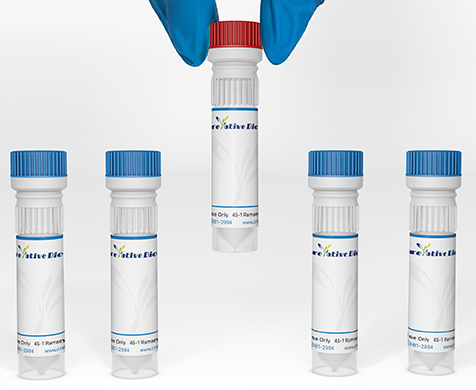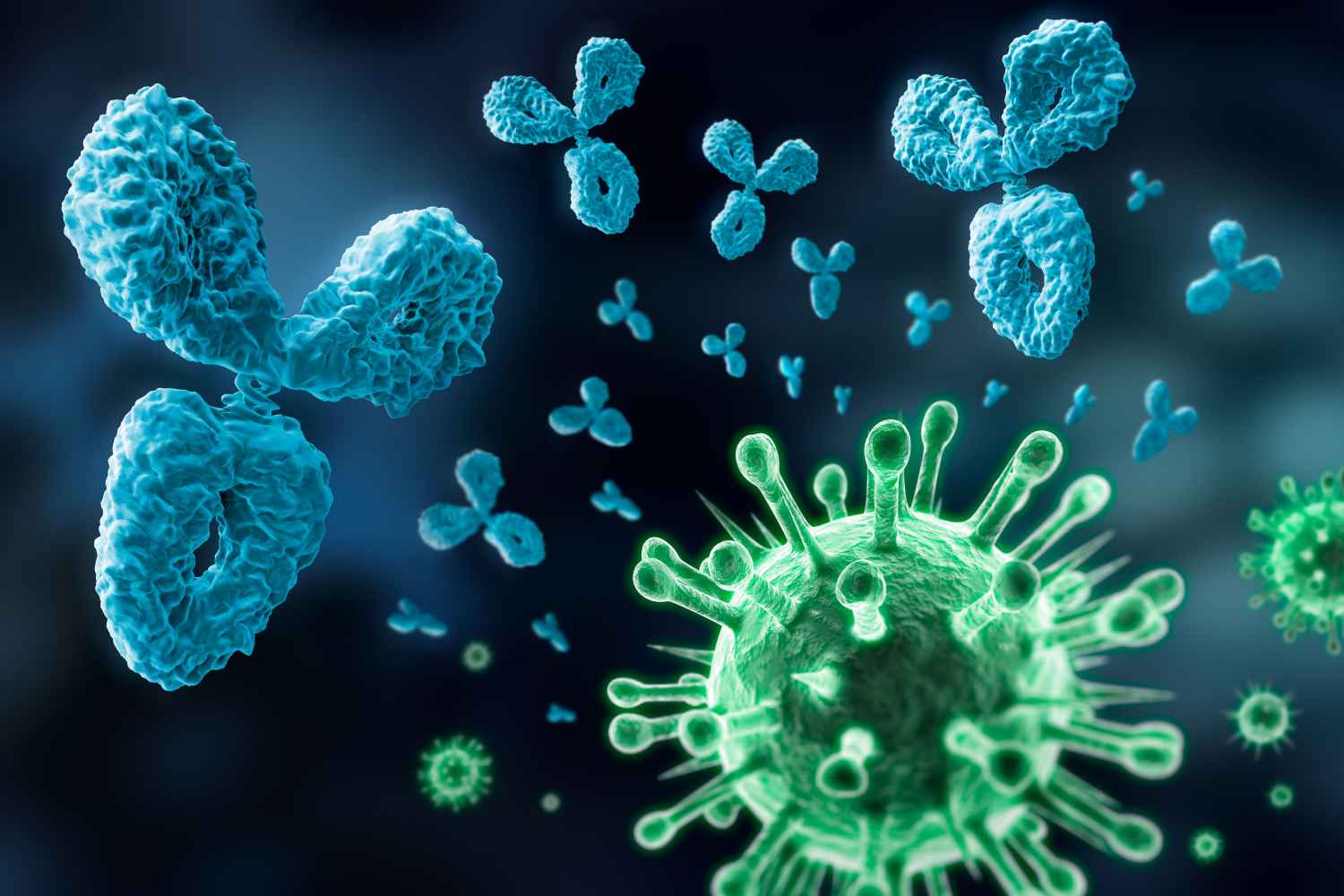PEX2
PEX2 is an integral peroxisomal membrane protein required for peroxisome biogenesis. The protein is thought to be involved in peroxisomal matrix protein import. Mutations in this gene result in one form of Zellweger syndrome and infantile Refsum disease. Alternative splicing results in multiple transcript variants encoding the same protein.
Full Name
Peroxisomal biogenesis factor 2
Function
Somewhat implicated in the biogenesis of peroxisomes.
Biological Process
Fatty acid beta-oxidationManual Assertion Based On ExperimentIMP:UniProtKB
Negative regulation of epithelial cell proliferationManual Assertion Based On ExperimentIMP:UniProtKB
Negative regulation of fibroblast proliferationManual Assertion Based On ExperimentIMP:UniProtKB
Negative regulation of transcription by RNA polymerase IIManual Assertion Based On ExperimentIMP:UniProtKB
Peroxisome organizationManual Assertion Based On ExperimentIMP:UniProtKB
Protein destabilizationManual Assertion Based On ExperimentIMP:UniProtKB
Protein import into peroxisome matrixManual Assertion Based On ExperimentIMP:UniProtKB
Very long-chain fatty acid metabolic processManual Assertion Based On ExperimentIMP:UniProtKB
Negative regulation of epithelial cell proliferationManual Assertion Based On ExperimentIMP:UniProtKB
Negative regulation of fibroblast proliferationManual Assertion Based On ExperimentIMP:UniProtKB
Negative regulation of transcription by RNA polymerase IIManual Assertion Based On ExperimentIMP:UniProtKB
Peroxisome organizationManual Assertion Based On ExperimentIMP:UniProtKB
Protein destabilizationManual Assertion Based On ExperimentIMP:UniProtKB
Protein import into peroxisome matrixManual Assertion Based On ExperimentIMP:UniProtKB
Very long-chain fatty acid metabolic processManual Assertion Based On ExperimentIMP:UniProtKB
Cellular Location
Peroxisome membrane
Involvement in disease
Peroxisome biogenesis disorder complementation group 5 (PBD-CG5):
A peroxisomal disorder arising from a failure of protein import into the peroxisomal membrane or matrix. The peroxisome biogenesis disorders (PBD group) are genetically heterogeneous with at least 14 distinct genetic groups as concluded from complementation studies. Include disorders are: Zellweger syndrome (ZWS), neonatal adrenoleukodystrophy (NALD), infantile Refsum disease (IRD), and classical rhizomelic chondrodysplasia punctata (RCDP). ZWS, NALD and IRD are distinct from RCDP and constitute a clinical continuum of overlapping phenotypes known as the Zellweger spectrum (PBD-ZSS).
Peroxisome biogenesis disorder 5A (PBD5A):
A fatal peroxisome biogenesis disorder belonging to the Zellweger disease spectrum and clinically characterized by severe neurologic dysfunction with profound psychomotor retardation, severe hypotonia and neonatal seizures, craniofacial abnormalities, liver dysfunction, and biochemically by the absence of peroxisomes. Additional features include cardiovascular and skeletal defects, renal cysts, ocular abnormalities, and hearing impairment. Most severely affected individuals with the classic form of the disease (classic Zellweger syndrome) die within the first year of life.
Peroxisome biogenesis disorder 5B (PBD5B):
A peroxisome biogenesis disorder that includes neonatal adrenoleukodystrophy (NALD) and infantile Refsum disease (IRD), two milder manifestations of the Zellweger disease spectrum. The clinical course of patients with the NALD and IRD presentation is variable and may include developmental delay, hypotonia, liver dysfunction, sensorineural hearing loss, retinal dystrophy and vision impairment. Children with the NALD presentation may reach their teens, while patients with the IRD presentation may reach adulthood. The clinical conditions are often slowly progressive in particular with respect to loss of hearing and vision. The biochemical abnormalities include accumulation of phytanic acid, very long chain fatty acids (VLCFA), di- and trihydroxycholestanoic acid and pipecolic acid.
A peroxisomal disorder arising from a failure of protein import into the peroxisomal membrane or matrix. The peroxisome biogenesis disorders (PBD group) are genetically heterogeneous with at least 14 distinct genetic groups as concluded from complementation studies. Include disorders are: Zellweger syndrome (ZWS), neonatal adrenoleukodystrophy (NALD), infantile Refsum disease (IRD), and classical rhizomelic chondrodysplasia punctata (RCDP). ZWS, NALD and IRD are distinct from RCDP and constitute a clinical continuum of overlapping phenotypes known as the Zellweger spectrum (PBD-ZSS).
Peroxisome biogenesis disorder 5A (PBD5A):
A fatal peroxisome biogenesis disorder belonging to the Zellweger disease spectrum and clinically characterized by severe neurologic dysfunction with profound psychomotor retardation, severe hypotonia and neonatal seizures, craniofacial abnormalities, liver dysfunction, and biochemically by the absence of peroxisomes. Additional features include cardiovascular and skeletal defects, renal cysts, ocular abnormalities, and hearing impairment. Most severely affected individuals with the classic form of the disease (classic Zellweger syndrome) die within the first year of life.
Peroxisome biogenesis disorder 5B (PBD5B):
A peroxisome biogenesis disorder that includes neonatal adrenoleukodystrophy (NALD) and infantile Refsum disease (IRD), two milder manifestations of the Zellweger disease spectrum. The clinical course of patients with the NALD and IRD presentation is variable and may include developmental delay, hypotonia, liver dysfunction, sensorineural hearing loss, retinal dystrophy and vision impairment. Children with the NALD presentation may reach their teens, while patients with the IRD presentation may reach adulthood. The clinical conditions are often slowly progressive in particular with respect to loss of hearing and vision. The biochemical abnormalities include accumulation of phytanic acid, very long chain fatty acids (VLCFA), di- and trihydroxycholestanoic acid and pipecolic acid.
View more
Anti-PEX2 antibodies
+ Filters
 Loading...
Loading...
Target: PEX2
Host: Mouse
Antibody Isotype: IgG
Specificity: Human
Clone: CBYC-P302
Application*: WB, IC, P, C, E
More Infomation
Hot products 
-
Rabbit Anti-ABL1 (Phosphorylated Y185) Recombinant Antibody (V2-443434) (PTM-CBMAB-0001YC)

-
Mouse Anti-CD19 Recombinant Antibody (CBXC-1224) (CBMAB-C1491-CQ)

-
Mouse Anti-CCT6A/B Recombinant Antibody (CBXC-0168) (CBMAB-C5570-CQ)

-
Rabbit Anti-Acetyl-Histone H4 (Lys16) Recombinant Antibody (V2-623415) (CBMAB-CP1021-LY)

-
Mouse Anti-ADGRE2 Recombinant Antibody (V2-261270) (CBMAB-C0813-LY)

-
Rabbit Anti-ADRA1A Recombinant Antibody (V2-12532) (CBMAB-1022-CN)

-
Mouse Anti-ABL2 Recombinant Antibody (V2-179121) (CBMAB-A0364-YC)

-
Mouse Anti-8-oxoguanine Recombinant Antibody (V2-7697) (CBMAB-1869CQ)

-
Mouse Anti-ALDOA Recombinant Antibody (A2) (CBMAB-A2316-YC)

-
Mouse Anti-CGAS Recombinant Antibody (CBFYM-0995) (CBMAB-M1146-FY)

-
Mouse Anti-DLG1 Monolconal Antibody (4F3) (CBMAB-0225-CN)

-
Mouse Anti-AZGP1 Recombinant Antibody (CBWJZ-007) (CBMAB-Z0012-WJ)

-
Mouse Anti-CD24 Recombinant Antibody (SN3) (CBMAB-C1037-CQ)

-
Mouse Anti-ENO1 Recombinant Antibody (CBYC-A950) (CBMAB-A4388-YC)

-
Mouse Anti-BRCA2 Recombinant Antibody (CBYY-1728) (CBMAB-2077-YY)

-
Mouse Anti-B2M Recombinant Antibody (CBYY-0050) (CBMAB-0050-YY)

-
Mouse Anti-ADAM29 Recombinant Antibody (V2-179787) (CBMAB-A1149-YC)

-
Rabbit Anti-AKT2 (Phosphorylated S474) Recombinant Antibody (V2-556130) (PTM-CBMAB-0605LY)

-
Mouse Anti-BrdU Recombinant Antibody (IIB5) (CBMAB-1038CQ)

-
Mouse Anti-ACTN4 Recombinant Antibody (V2-6075) (CBMAB-0020CQ)

For Research Use Only. Not For Clinical Use.
(P): Predicted
* Abbreviations
- AActivation
- AGAgonist
- APApoptosis
- BBlocking
- BABioassay
- BIBioimaging
- CImmunohistochemistry-Frozen Sections
- CIChromatin Immunoprecipitation
- CTCytotoxicity
- CSCostimulation
- DDepletion
- DBDot Blot
- EELISA
- ECELISA(Cap)
- EDELISA(Det)
- ESELISpot
- EMElectron Microscopy
- FFlow Cytometry
- FNFunction Assay
- GSGel Supershift
- IInhibition
- IAEnzyme Immunoassay
- ICImmunocytochemistry
- IDImmunodiffusion
- IEImmunoelectrophoresis
- IFImmunofluorescence
- IGImmunochromatography
- IHImmunohistochemistry
- IMImmunomicroscopy
- IOImmunoassay
- IPImmunoprecipitation
- ISIntracellular Staining for Flow Cytometry
- LALuminex Assay
- LFLateral Flow Immunoassay
- MMicroarray
- MCMass Cytometry/CyTOF
- MDMeDIP
- MSElectrophoretic Mobility Shift Assay
- NNeutralization
- PImmunohistologyp-Paraffin Sections
- PAPeptide Array
- PEPeptide ELISA
- PLProximity Ligation Assay
- RRadioimmunoassay
- SStimulation
- SESandwich ELISA
- SHIn situ hybridization
- TCTissue Culture
- WBWestern Blot

Online Inquiry







